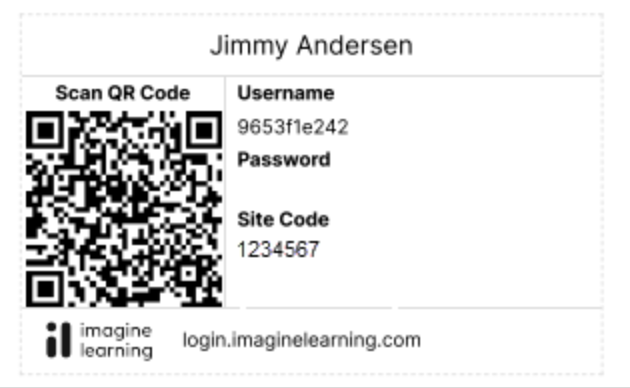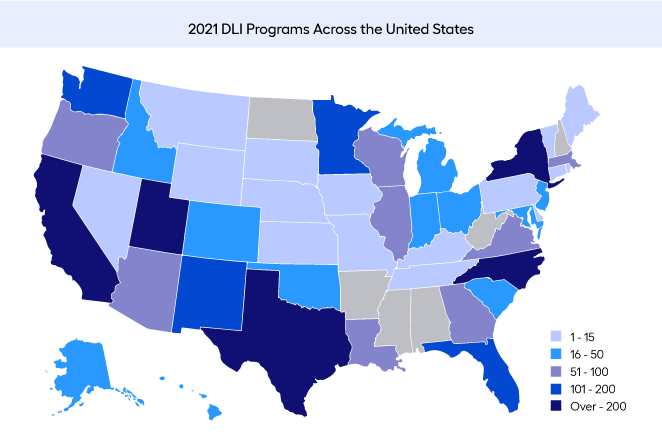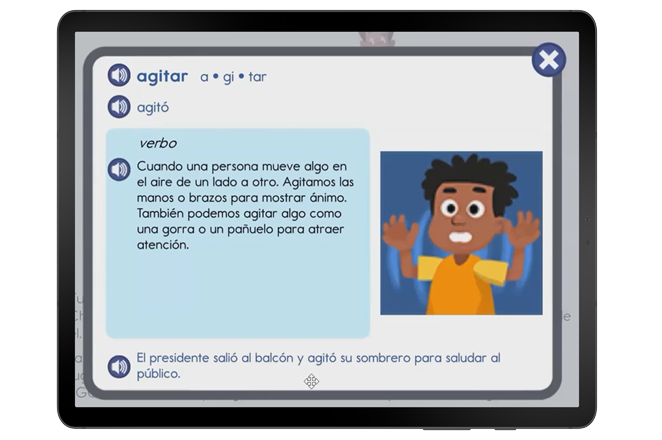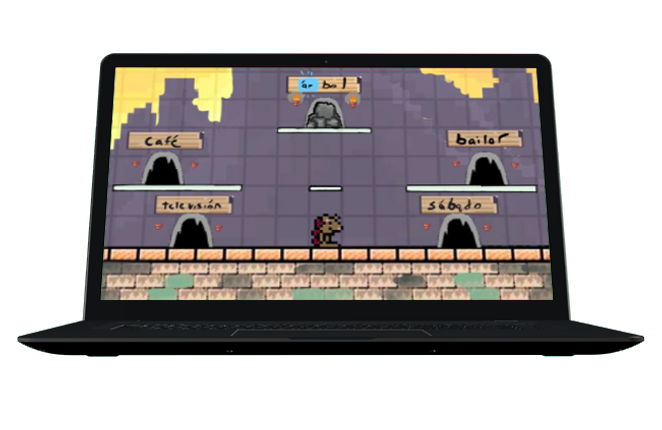New Rostering Experience Across Supplemental Suite

November 2024
Easily print scannable student login cards
Additional functionality has been added to the new rostering experience for Imagine Language & Literacy, Imagine Español, Imagine Galileo K–12, Imagine MyPath, Imagine Science Corner, and Imagine Purpose. Educators can now print student login cards for classes or individual students.
These cards also contain a QR code that can be scanned with the device’s camera to log in without a username and password. We recommend sending family letters home with login cards so parents and caregivers understand how to help students use these programs outside of school. Learn more.





